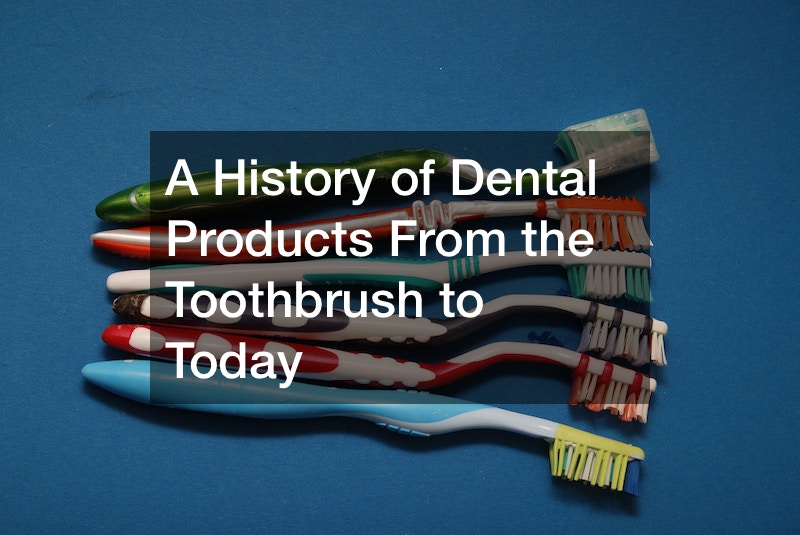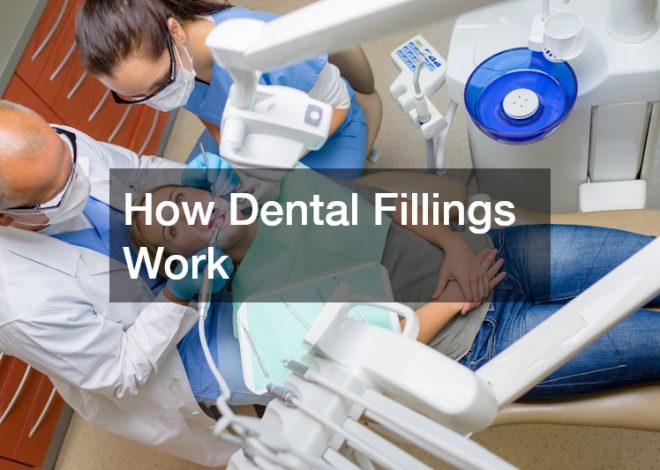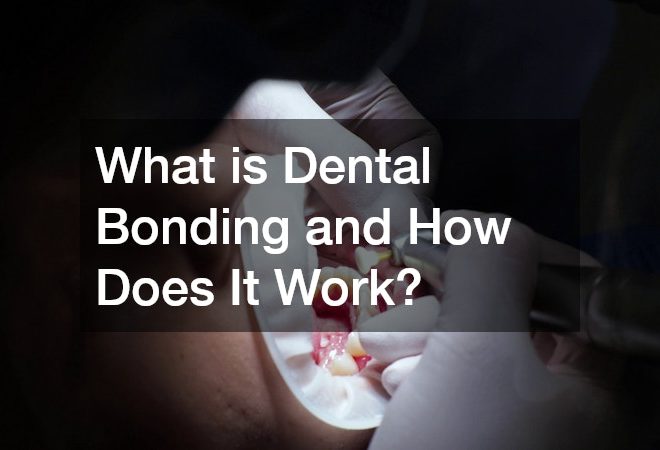
A History of Dental Products From the Toothbrush to Today

Much of the current research on toothbrushes and the history of dental products has been carried out at the National Institute for Dental Research in the Department of Pediatrics at the National Institutes of Health (NIH). The NIH reports that more than 70 percent of today’s American children brush their teeth daily and that fewer than half of American children and adults have ever been taught the “three Rs” – brushing, rinsing, and flossing. The NIH cites statistics indicating that young children may lack the ability to use two fingers to form a “wet toothbrush” and to remember to floss daily, which has led to a rise in dental caries, a primary indicator of poor dental hygiene. Healthcare staffing, insurance companies, and dental nutrition counseling, all have had a vested interest in getting average consumers to take better care of their teeth.
Today’s toothbrush is generally considered safe to use; most contain a small amount of fluoride, and the NIH notes that no scientific evidence has been found linking fluoride to any ill health effects. However, because dental care is expensive, and dental caries a major problem in many developed countries, the NIH recommends that parents use a toothbrush with a rubber handle instead of a plastic handle, and with a wooden or plastic case.

History of the Dentist’s Brush
The first dentists in Europe were probably Spanish. A doctor named Tiberius Armellini was performing tooth extractions with an axe around 1576; this was the first recorded use of an electric drill for dental extraction, and marks the start of the 19th century practice of deep tooth excavation. By the 1820s the use of drills was well established, and the first electric drill to be widely used in the treatment of teeth came about in 1833.
By 1900, electric drills had become standard equipment in dentistry; however, very few dentists in Europe actually drilled their patients’ teeth in the early part of the century. The first well-known European dentists to drill their patients’ teeth were Domenico Forrester and Louis Loiseau, who were among the pioneers of orthodontic treatment in France. Both were brought to the United States in 1873 by W.S. Harvey to join his practice in Boston. By the end of the 1880s, all leading orthodontists were drilling their patients’ teeth. A report on the practice by Forrester in 1890 that covers part of the history of dental products, entitled “A Treatise on Flossing,” argued that the task of tooth care could best be undertaken with minimal interference with the natural dentition.
However, the name “dentist” wasn’t coined until 1883, when Maximilian Zollinger, who had pioneered the manufacture of certain types of dental drills, founded the Dentister’s and Dentist’s Laboratories of Vienna, Austria, with Dr. Hans Vollmer. This name was quickly adopted in English-speaking countries as a general term for oral and maxillofacial surgeons.
In the year 1695, a craftsman named John Greenleaf Spofford carved six toothbrushes into an elm table leg and called them ‘gentlemen’s health’s handy-working gentlemen’s Toothbrushes’.Many popular dentifrice brands have been around since the late 1800s. Famous dentifrice brands include Colgate, Pepsodent, Dr. Bronner’s, Crest, Gerber, and Colgate Optic White. In 1996, Procter & Gamble introduced Crest White Strips and two years later, Crest ProHealth.
The history of powdered dentifrices is closely tied to oral hygiene practices among Native Americans. By the 1700s, a number of Native Americans including the Ho-Chunk (Winnebago), Sac and Fox (Fox) and Meskwaki (Fox) had developed large systems of corn and walnut flour mills, or “hollow mills” that processed finely ground flours. The finished flour was pressed into trays, and both dried and ground again into a soft flour.
Many Native American flours were formulated as a sticky, mildly alkaline mixture that served as an ideal hardener for numerous flavors and the leaves of the American sumac tree. The dried, ground flours were soaked in water and dried again to make a powder. The American sumac was used as a leaf dye for the final product, which was then sifted and sifted again. The powder was strained through cloth screens and stored in wooden boxes for use during the dry season. The practice of making powdered dentifrices continued among the Native American tribes for hundreds of years.
Pre-Dentists
It is unclear when the concept of “dentistry” as a profession emerged from tooth pulling. Some early dentists were not technically trained or licensed physicians, but rather were “dentists” or “dentistry teachers” who were self-trained. The first known dentists or dentistry teachers in the history of dental products were the Egyptians.
The Ancient Egyptians, according to one source, “… first practiced what could be called dentistry, which was to extract the teeth of animals.” As part of the rich history of dental products, the Ancient Egyptians had a close working relationship with the physicians of the time, as evidenced by the fact that some of the names of the ancient physicians are also the names of the animals they were treating. Although a dentist, using a tool called the tooth extractor, was the primary person working on the animal and doing the extraction, the use of anesthetics and/or a local anesthetic is possible. Other animals may have had tooth extraction performed by a person who was not a dentist, such as a veterinarian, or a person who was both.
Sozodont
Sozodont is a dental treatment that was developed in the 1970s. The treatment was developed to treat a number of conditions, including periodontal disease and gingivitis. It is a type of flossing that is used to clean and prevent the buildup of bacteria in the mouth. Sozodont is also used to treat periodontal disease, which is the buildup of bacteria in the mouth. The treatment involves flossing twice a day for about two weeks. It is usually not recommended for people who have sensitive teeth or who have gingivitis.
The treatment was also used to treat gingivitis, which is the buildup of bacteria in the mouth. The treatment involves flossing twice a day for about two weeks. It is usually not recommended for people who have sensitive teeth or who have gingivitis.
Soozodont was first developed in the 1970s by Dr. Leonard Sozodont, who was a dentist at the time. Dr. Sozodont was looking for a way to treat periodontal disease and gingivitis without using surgery or antibiotics. He developed a treatment that involved flossing twice a day for about two weeks. He later improved on the treatment by adding a special toothbrush that was designed to clean and prevent bacteria from building up in the mouth. Dr. Sozodont’s treatment was later improved upon by Dr. William Wainwright, a dental surgeon and professor at the University of Pennsylvania. Dr. Wainwright was appointed Director of the Dental School and the College of Dental Surgery in 1875, and in that year he became the first professor of dental surgery at the university. The University of Pennsylvania School of Dental Medicine was established in 1878, with Dr. Wainwright as the first dean and Dr. Sozodont as his assistant. The school was later renamed the University of Pennsylvania School of Dentistry.

Dental Hygiene
In the late 1940s, the American Dental Association (ADA) began to endorse and promote the fluoride ion as the best way to prevent tooth decay. The ADA also advocated the use of the fluoride ion in various fluoride compounds to prevent tooth decay and also in drinking water to prevent tooth decay in those who had difficulty keeping their teeth clean. The ADA also called for dentists to recommend fluoridated dentifrice and for dentists to provide fluoride ion treatments to patients. The ADA also encouraged states to pass legislation requiring dentists to prescribe fluoride treatments and to provide fluoridated drinking water. By 1954, many communities in the US had passed such legislation. The ADA also encouraged the development of fluoride ion toothpastes with claims of efficacy to prevent tooth decay.
The ADA’s promotion of the fluoride ion was in the teeth-decay prevention business. The organization knew that if it also promoted the fluoride ion in toothpaste, the ADA would be in a better position to influence public taste for toothpaste. The ADA also promoted fluoride toothpaste as a solution to community water fluoridation through a campaign known as the “Fluoridation is Safe” campaign, which is essential to understanding the history of dental products. The ADA’s fluoride toothpaste promotion efforts were successful. By 1949, the American Dental Association had raised the fluoride ion to the third most popular category of fluoride-bearing toothpaste, behind fluoridated and unfluoridated toothpaste. The campaign was based on two major claims. The first claim was that people who used fluoride toothpaste would have fewer cavities. The second claim was that the fluoride ion would prevent erosion of tooth enamel and strengthen enamel.
Dr. Horace Wells
A dentist from Connecticut, who was responsible for the use of nitrous oxide (NO) for anesthesia in dentistry. Wells was born in 1869 and was a dentist in Northampton, Connecticut. He graduated from the University of Hartford in 1894 and received his dental degree from the same university in 1896. He moved to Hartford and opened a practice in 1895. In 1900, he formed a partnership with William Crawford. In the late 1890s, Wells began to lecture on the subject of anesthesia. In September 1896, he was invited to lecture at Harvard Medical School on the subject of anesthesia to a group of physicians. At the end of the lecture, the doctors asked for the opportunity to try out an anesthetic for themselves. Wells was asked to prepare the patients, and they all slept, without a single problem. The following day, the entire group of surgeons attended a dinner party and discussed the new use of anesthesia. They found that it was a pleasant experience. After this, there were other dentists who began to use NO for anesthesia in dentistry. Dr. Wells also developed the use of hypodermic and intravenous injections. Some of his early work included the use of NO by dentists for anesthetic purposes.

Dental Fillings
The first known dental filling consisted of the silver amalgam introduced in the US in the 1830s. It, and various other materials, were used in the 1840s and 1850s to fill teeth that were either damaged or decayed.
Many of these fillings were left in place for years and were subject to a variety of problems including infection, corrosion, and dissolution. The first mercury poisoning death occurred in 1853 when a patient died following the extraction of a filling. By the 1870s, however, silver amalgam was the material of choice. In the 1880s, amalgam fillings were replaced by gold fillings, which were used until the 1950s.
While the history of dental products informs us that amalgam was the material of choice in the 19th century, dental fillings were not seen as a permanent solution. However, improvements in the dental sealants that coat the tooth surface after the filling to prevent bacterial invasions, and techniques to reduce the risk of infection, began to change the view that the filling was just a temporary measure, and would eventually have to be replaced. In the 1920s, dental materials improved significantly, with the result that people began to accept fillings and other dental techniques as permanent solutions.
Orthodontics
In the 1840s, German orthodontist Friedrich Wilhelm von Escherich, a professor at the University of Leipzig, developed the first removable orthodontic appliance to correct underbites and overbites. It consisted of a rubber headband mounted on a steel band, that was fastened to the arch with screws.
It was not patented, and Escherich made several improvements. He also developed an elastic rubber-backed brace, which had a springlike action, that could be used to correct underbites. Escherich’s work was rediscovered in 1885, when Austrian orthodontist Alfred Angle began using braces on a series of patients and published a paper on the subject in the Journal of the American Dental Association. Escherich’s techniques were used by Max Schick, who applied them to the first all-metal fixed orthodontic appliance in 1903. In the 1920s, braces were introduced as a new form of orthodontic treatment.

Dental Implants
In the early 20th century, American dentist James Alfred Allen invented an artificial tooth made of gold and set in an artificial root to replace the root of a tooth that had been lost, with the goal of better health and wellness for his patients. He called it a ‘Facial Implant’ (1908), and in 1910, the first artificial tooth was fitted in a patient. In 1912, American dentist Willoughby Gordon Root made a plaster model of the patient’s jaw, and showed it to the dentist, Dr. William House. Root had previously demonstrated the use of dental implants as a treatment for teeth lost due to periodontal disease, and House was interested in the idea. In 1913, Root successfully treated the first patient with an implant.
Dental Implants and Crowns
Dental implants are a type of dental prosthesis that are used to replace missing teeth. They are made of titanium and are inserted into the jawbone. They are then attached to the jawbone with dental cement and then held in place with dental retainers. They are usually used for patients who have suffered from severe tooth loss due to disease, trauma, or decay.
There are mainly two main types of dental implants: fixed and removable. Fixed implants are used when the patient has no choice but to replace their missing teeth. Removable implants, on the other hand, are used when patients can choose to replace their missing teeth at any time. The main advantage of fixed implants is that they are more durable than removable ones, which makes them preferred in the history of dental products. However, they also have a higher risk of infection and complications. The main disadvantage of fixed implants is that they take longer to heal than removable ones. In addition, they can cause more problems than removable ones because they can be more difficult to care for and require more frequent cleaning.
The history of dental products like implants is a long and complex one. In the beginning, dental implants were used to replace missing teeth. Today, dental implants are used to replace missing teeth and fill in gaps in the jawbone.
The first dental implants were made from porcelain. Porcelain was the material of choice because it was strong and durable. Porcelain implants were not very effective, however, because they often cracked or broke. This was because porcelain is brittle and can break under pressure.
The porcelain dental implant was replaced with acrylic in the 1950s. Acrylic teeth crowns are much stronger than porcelain and are also less brittle. Acrylic implants lasted much longer than porcelain ones, and they were easier to repair when they broke. In the 1970s, titanium was used as a replacement for porcelain. Titanium is much stronger than porcelain and is also less brittle. Titanium implants lasted much longer than acrylic ones, and they were easier to repair when they broke.
Today, dental crowns are made from different materials, often placed by general dentists or emergency dentists along with their standard dental services. Titanium is still the most common material used for dental implants. The most common materials used today are titanium and polymethylmethacrylate (PMMA). PMMA is a plastic that has been combined with calcium phosphate to create a strong implant that can withstand high pressure and temperature.


